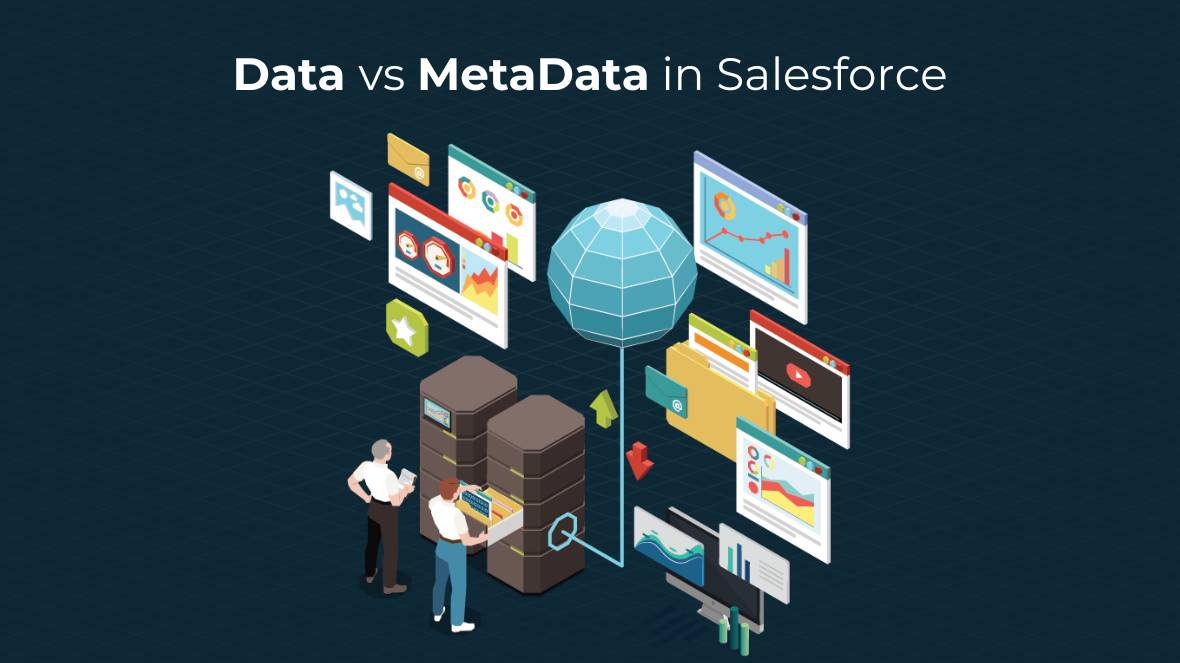Introduction:
In the realm of Salesforce, two crucial concepts lay the foundation for the management and organization of information: data and metadata. While they might sound similar, these terms refer to distinct elements that play vital roles in the Salesforce ecosystem. Understanding the difference between data and metadata is crucial for harnessing the full potential of Salesforce’s capabilities and optimizing the platform for enhanced business performance.
Data: The Lifeblood of Salesforce
Data within Salesforce refers to the actual information and records that businesses collect and manage. This can encompass a wide range of information, such as customer details, leads, opportunities, accounts, and various other entities that form the core of a company’s operations. Data represents the real-time interactions, transactions, and activities that take place within the Salesforce environment.
With the ability to store, manage, and analyze vast quantities of data, Salesforce serves as a robust customer relationship management (CRM) platform, facilitating businesses in understanding their customers better, streamlining sales processes, and making informed decisions based on comprehensive data insights.
Metadata: The Blueprint of Salesforce Configurations
Contrary to data, metadata in Salesforce refers to the configurations, settings, and definitions that govern how the platform operates. It outlines the structure and behavior of the data, essentially serving as a blueprint for the various elements within the Salesforce environment. Metadata includes information about custom objects, fields, workflows, processes, page layouts, validation rules, and other customization settings that define the platform’s functionality and user experience.
Essentially, metadata acts as the guiding force behind how data is organized, presented, and processed within Salesforce. It dictates the rules, relationships, and constraints that govern how data is stored, accessed, and utilized by users and applications.
The Relationship Between Data and Metadata
While data and metadata serve distinct purposes within Salesforce, they are deeply interconnected and reliant on each other. The metadata settings define the structure and constraints for the data, ensuring that it is organized, secured, and accessible in a consistent manner. Without metadata, data would lack the necessary context and structure required for meaningful interpretation and usage.
On the other hand, the quality and accuracy of the data directly impact the effectiveness of the metadata configurations. Accurate data input and maintenance are essential for ensuring that the metadata settings function optimally and deliver the desired outcomes for the business.
Conclusion:
To leverage the full potential of Salesforce, businesses must prioritize the management of both data and metadata. This involves implementing robust data governance practices to maintain data accuracy, integrity, and security. Simultaneously, a strategic approach to metadata customization and configuration is crucial for tailoring the Salesforce platform to meet specific business requirements and workflows.
By investing in comprehensive data management strategies and leveraging metadata-driven customizations, businesses can harness the power of Salesforce to drive sales, enhance customer relationships, and achieve sustainable growth and success.
In conclusion, while data represents the tangible information within Salesforce, metadata serves as the invisible force guiding the platform’s configuration and behavior. Recognizing the importance of both elements and their symbiotic relationship is vital for unlocking the full potential of Salesforce as a powerful tool for driving business success.


